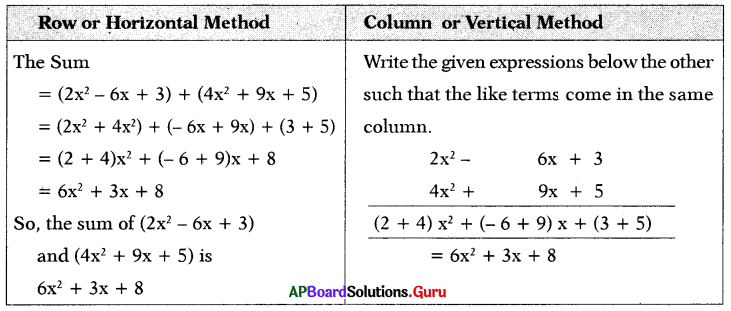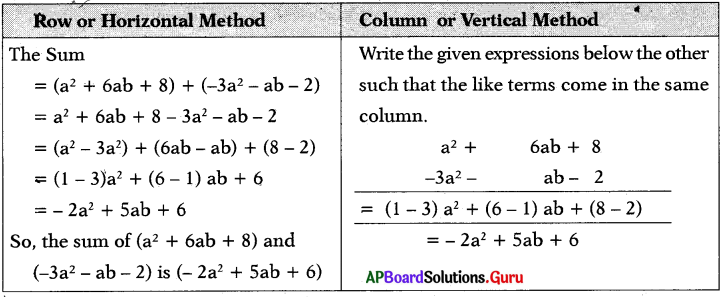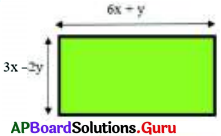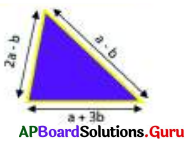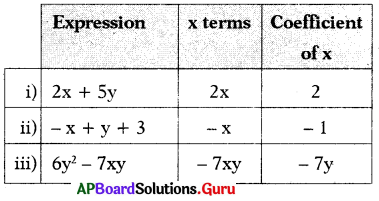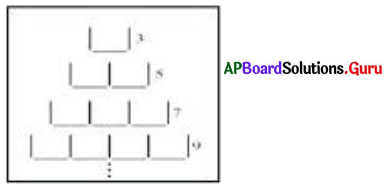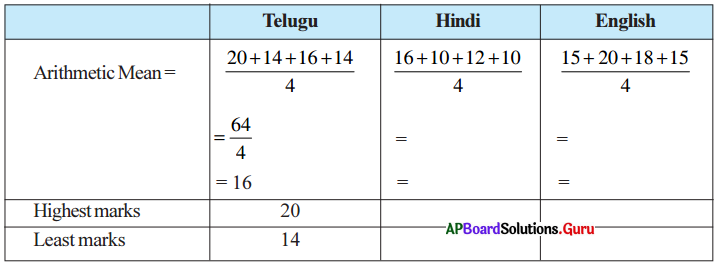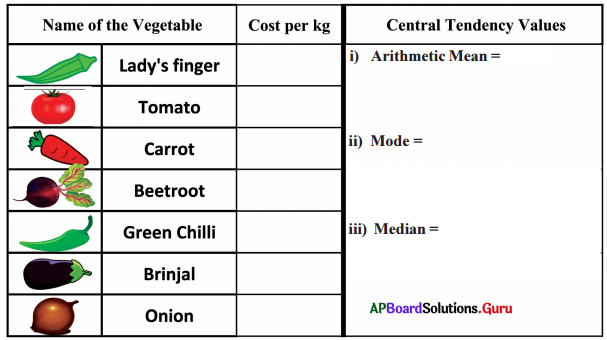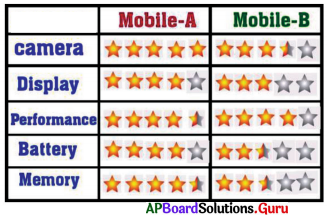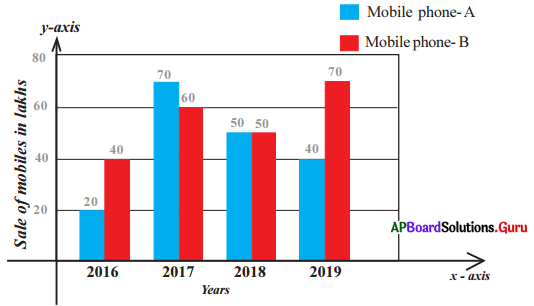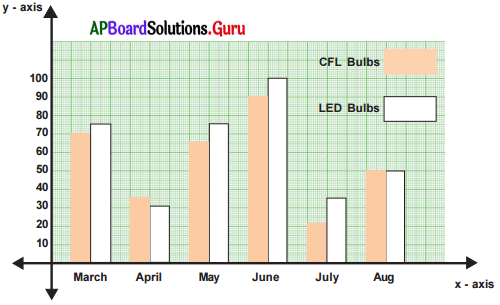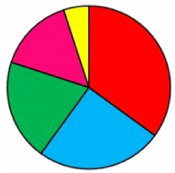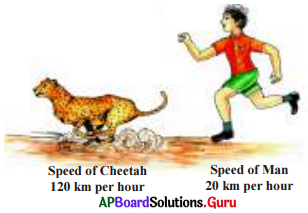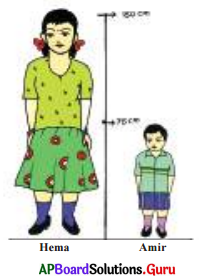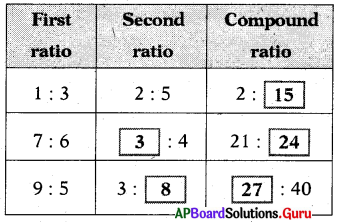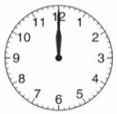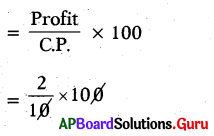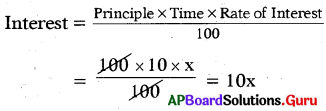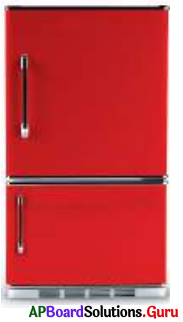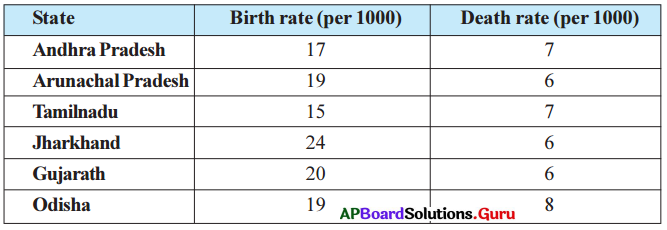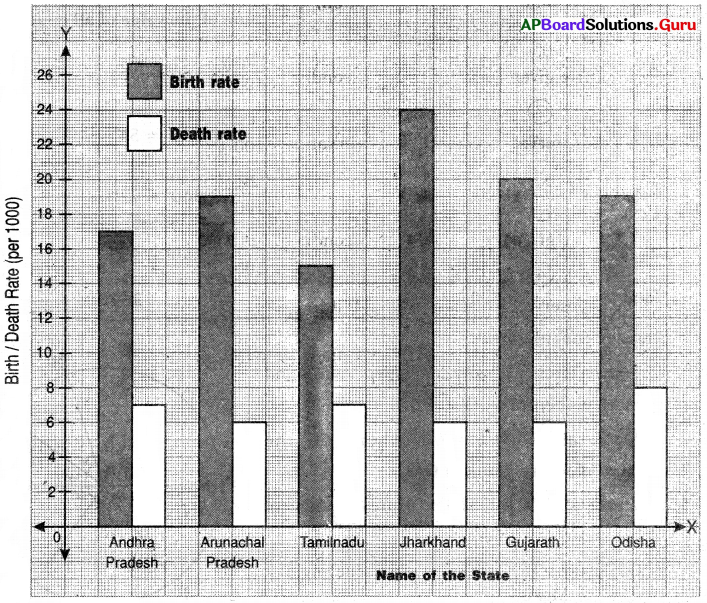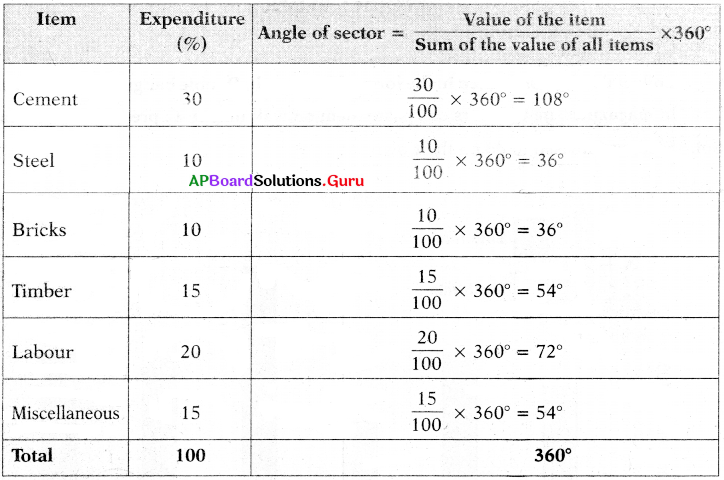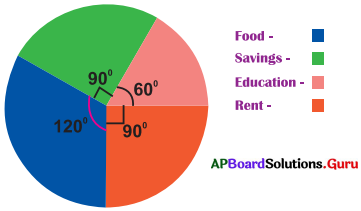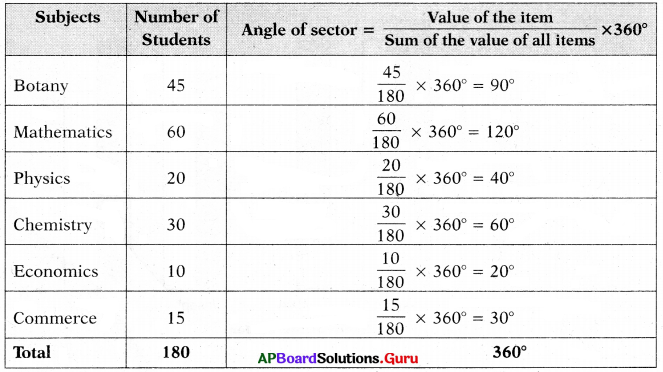SCERT AP 7th Class Maths Solutions Pdf Chapter 8 Exponents and Powers Ex 8.1 Textbook Exercise Questions and Answers.
AP State Syllabus 7th Class Maths Solutions 8th Lesson Exponents and Powers Ex 8.1
Questions 1.
Express the following into exponential form:.
(i) 14 × 14 × 14
Answer:
14 × 14 × 14 = 143
(ii) 25 × 25 × 25 × 25 × 25
Answer:
25 × 25 × 25 × 25 × 25 = 25
(iii) ab × ab × ab × ab
Answer:
ab × ab × ab × ab = (ab)4
(iv) 7 × p × p × q
Answer:
7 × p × p × q = 7 × p2 × q
![]()
Question 2.
Express the following into expanded form:
(i) 276
Answer:
276 = 27 × 27 × 27 × 27 × 27 × 27
(ii) 1015
Answer:
1015 = 101 × 101 × 101 × 101 × 101
(iii) (2b)4
Answer:
2b4 = 2b × 2b × 2b × 2b
(iv) 3a8
Answer:
3a8 = 3 × a× a × a × a × a × a × a × a
Question 3.
Express the following In exponential form through prime factorisation: .
(i) 81
Answer:
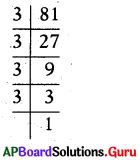
81 = 3 × 27
= 3 × 3 × 9
= 3 × 3 × 3 × 3
∴ 81 = 34
(ii) 125
Answer:

125 = 5 × 25
= 5 × 5 × 5
∴ 125 = 53
(iii) 324
Answer:

324 = 2 × 162
= 2 × 2 × 81
= 2 × 2 × 3 × 11
= 2 × 2 × 3 × 3 × 9
= 2 × 2 × 3 × 3 × 3 × 3
∴ 324 = 22 × 34
(iv) 1080
Answer:

1080 = 2 × 540
= 2 × 2 × 270
= 2 × 2 × 2 × 135
= 2 × 2 × 2 × 3 × 45
= 2 × 2 × 2 × 3 × 3 × 15
= 2 × 2 × 2 × 3 × 3 × 3 × 5
∴ 1080 = 23 × 31 × 51
![]()
Question 4.
Compute and identify the greater num-ber in the following pairs : 7
(i) 25 or 52
Answer:
25 = 2 × 2 × 2 × 2 × 2 = 32
52 = 5 × 5 = 25
32 > 25
Therefore, 25 > 52
(ii) 73 or 37
Answer:
73 = 7 × 7 × 7 = 343
37 = 3 × 3 × 3 × 3 × 3 × 3 × 3 = 2187
2187 > 343
Therefore, 37 > 73
(iii) 23 or 32
Answer:
23 = 2 × 2 × 2 = 8
32 = 3 × 3 = 9
9 > 8
Therefore, 32 > 23
Question 5.
Expand 33 × 42 and 43 × 32. Are they equal? Justify.
Answer:
33 × 42 = 3 × 3 × 3 × 4 × 4
= 27 × 16 = 432
43 × 32 = 4 × 4 × 4 × 3 × 3
= 64 × 9 = 576
432 × 576 (They are not equal)
Therefore, 576 > 432
So, 43 × 32 > 33 × 42
Question 6.
Express the following numbers in exponential form with the given base.
(i) 1000, base 10
Answer:

∴ 1000 = 10 × 10 × 10 = 103
(ii) 512 base 2
Answer:
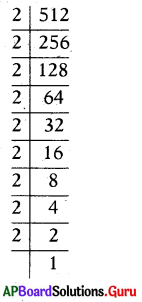
512 = 2 × 2 × 2 × 2 × 2 × 2 × 2 × 2 × 2
∴ 512 = 29
(iii) 243 base 3
Answer:

243 = 3 × 3 × 3 × 3 × 3
∴ 243 = 35
![]()
Question 7.
If a = 2, b = 3 find the value of
(i) aa + bb
Answer:
Given a = 2, b = 3
aa + bb = 22 + 33
= (2 × 2) + (3 × 3 × 3)
= 4 + 27 = 31
Therefore, if a = 2, b = 3 then aa + bb = 31
(ii) ab + ba
Answer:
Given a = 2, b = 3
ab + ba = 23 + 32
= (2 × 2 × 2) + (3 × 3).
= 8 + 9 = 17
Therefore, if a = 2, b = 3
then ab + ba = 17
(iii) (a + b)b
Answer:
Given a = 2, b = 3
(a + b)b = (2 + 3)3 = 53
= 5 × 5 × 5 = 125
Therefore, if a = 2, b == 3
then (a + b)b =125
Question 8.
Write the following in Exponential form:
(i) The speed of light in vacuum is about 30,00,00,000 m/sec.
Answer:
Given the speed of light = 30,00,00,000 m/sec
= 3 × 10 × 10 × 10 × 10 × 10 × 10 × 10 × 10
∴ Speed of light = 3 × 108 m/sec.
(ii) The population of India is about 121,00,00,000 as per 2011 census.
Answer:
Given population of India
= 121,00,00,000
= 121 × 10 × 10 × 10 × 10 × 10 × 10 × 10
= 11 × 11 × 107
∴ Population of India = 112 × 107 as per 2011 census.




